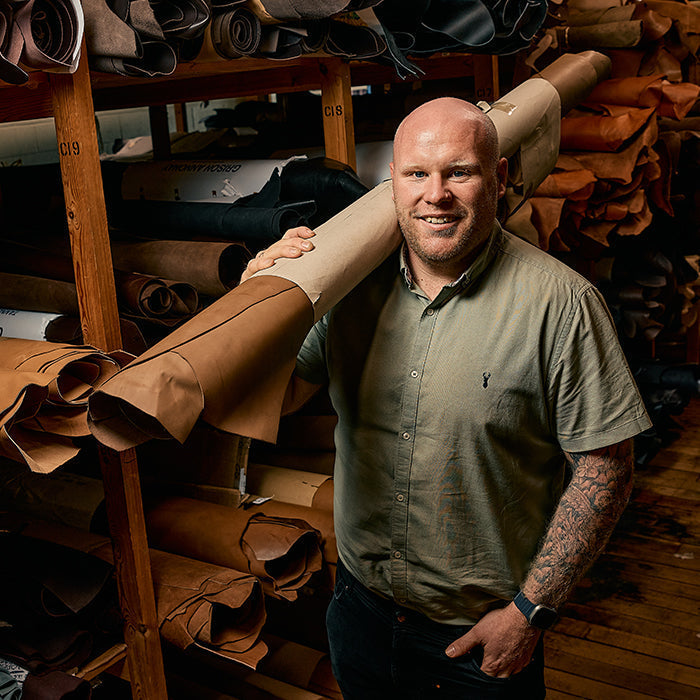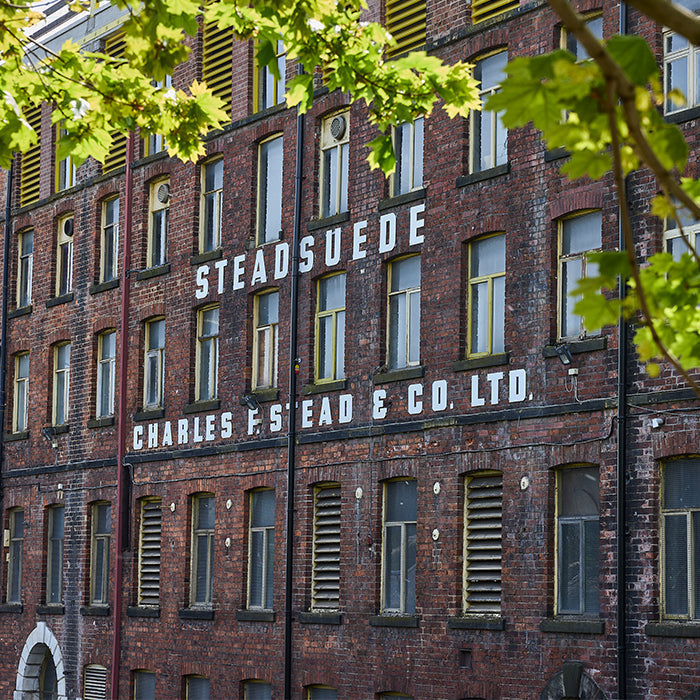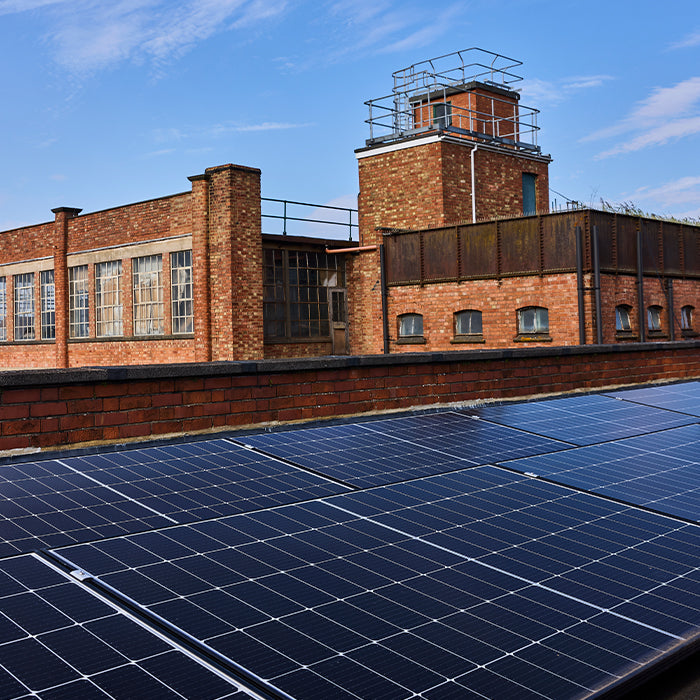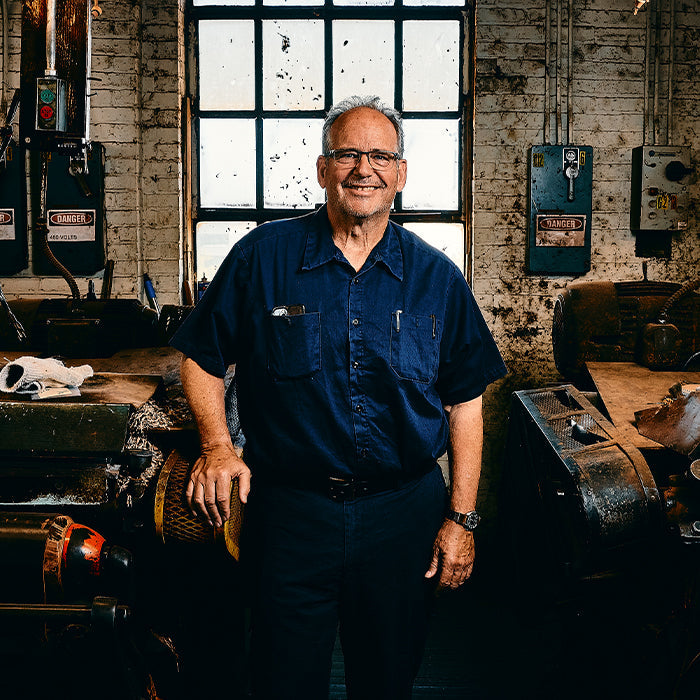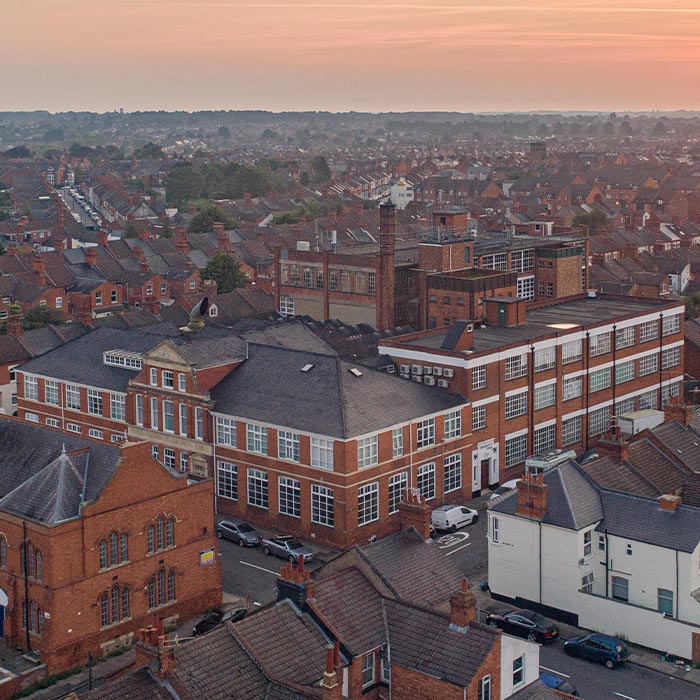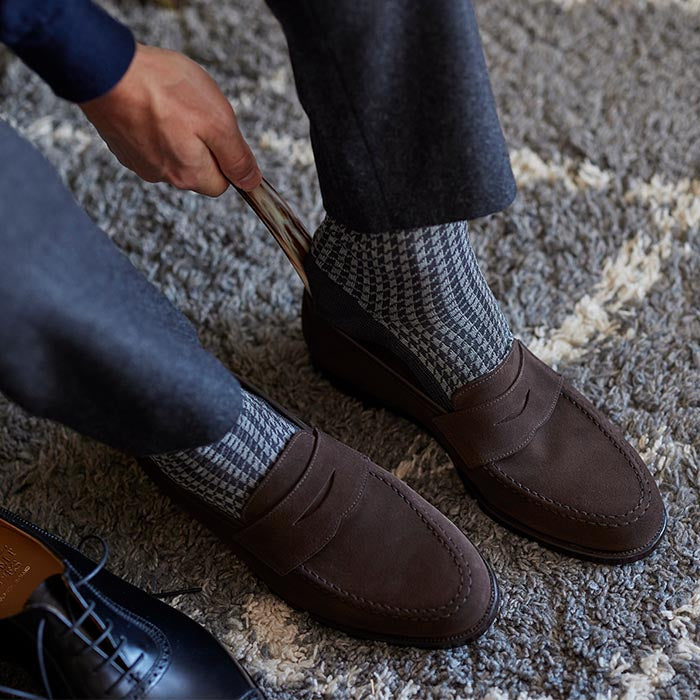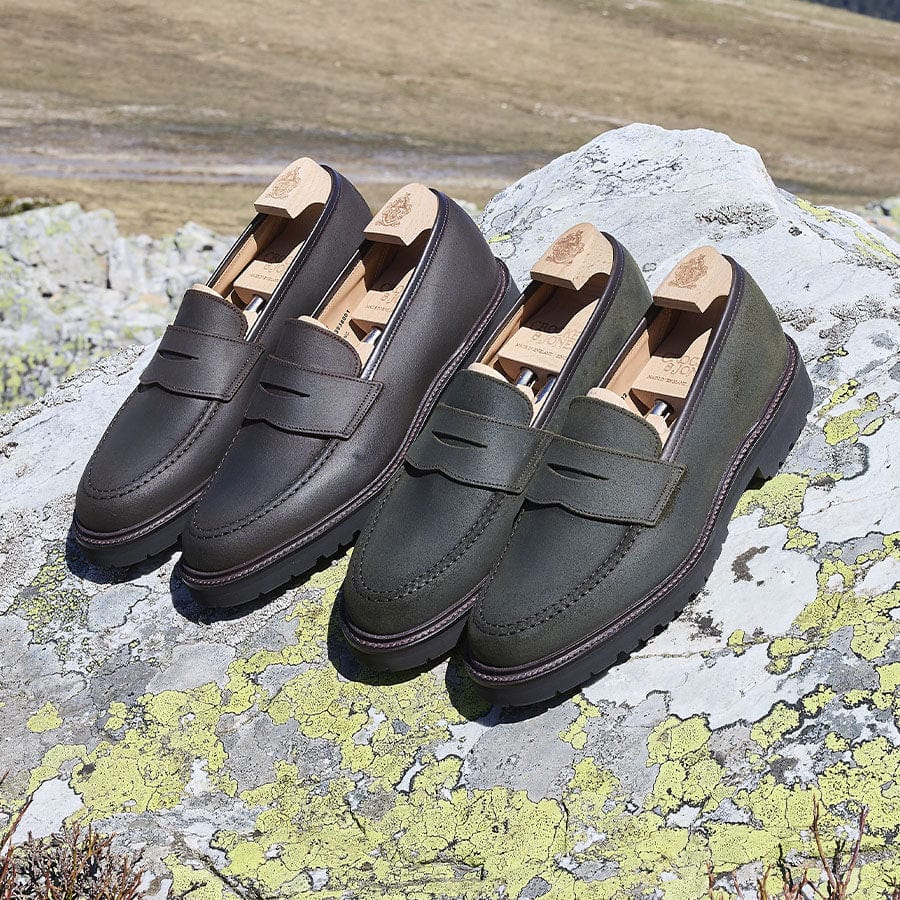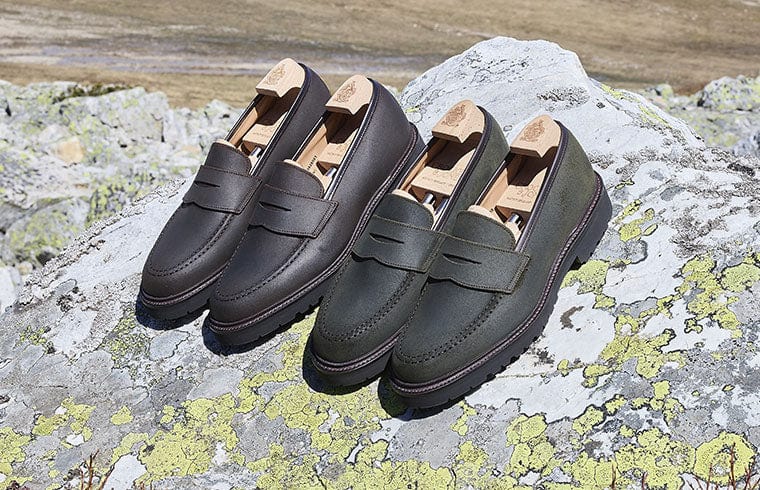
What is a day in the life of a Goodyear-welted Production Director like?
Start early! Up at 5:30am, in the factory for 6:25, and then just drive on!
The first thing I do is to look at the substandards from yesterday’s production. By looking in the Shoe Room at what has gone wrong the previous day, I get a feeling and an immediate snapshot of where we are, now.
Over the years, I have picked up so many bigger issues by keeping a hand on the shoes. Alongside me, my Factory Manager and my Shoe Room Supervisor will do the same. We all get a feeling for the issues coming through the factory, which can change each week for no apparent reason.
Thereafter, it is constant firefighting. My phone never stops. Problem solving throughout the day that generally just flows. I do a lot of listening to issues and problems and then help to get them sorted as best as we possibly can. It could be an issue with a shoe, it might be a personal issue with a member of staff who confide in me regularly. Every day is different.
Generally, I spend most of my time trying to get the best out of the people, the specialists, I employ.
Multitasking is a given as a Production Director, but what do you focus on the most and what makes these so crucial to your end consumers.
The things I focus on most are quality, quality, quality, attention to detail and flexibility.
In a 12 pair line, you will never get a pair of shoes exactly the same, there will always be the odd one with errors or mistakes. I look at it and say to myself, can we save it. You will never get things 100% right in our world, but you can damn well drive on to try. We are always pushing to get our production to a better standard, and I think we have done that well over the years, but we never believe it is good enough, and always look forward.
The same leather, cut by the same clicker that goes through the same processes can end up with different issues at the end. And you have to have a brain that thinks ‘why?’ and is able to understand the inner workings of whatever it is you are looking into. There are always new issues to find, improve and fix. You continually learn, because a factory such as ours is continually evolving with so many variants.

Crockett & Jones is a typical family business, so you can go from discussing the family pet to the ins/outs of cutting losses in the clicking room. How do you separate work from family?
I don’t think you can really and truly. My last factory manager, Lee, who actually left for a competitor (long story) was one of the very few people who I would confide in. I am a talker and releasing, sharing and talking about problems helps me enormously. I have good days and bad, like us all, but Lee was a tremendous listener, especially in my early days at C&J.
Most of my burden (not really a burden at all), is not actually the work itself, it is the emotional strength I need to ensure I am there for all of my staff all of the time.
Is it really that important to separate work from family life? Not really. I generally drive on and enjoy whatever I am involved with. If I had doubts or bad days whilst milking on the farm, I used to say to myself “Get a grip Nick. You think you are having a bad day, you have no idea. You have nothing to worry about compared to the problems of others in the world”. Really, my life has been simple in comparison to so many others.
Away from work, I continued my farming alongside work. Having recently moved out of the farm, I now spend time in my garden, which is still big enough to hold a greenhouse and a substantial vegetable plot.
We all know that manufacturing is the hard work behind the product, but few truly understand what goes into making a pair of our shoes. Can you give your customers an idea of what it takes to build a worldwide reputation for quality and value?
I could talk about materials, labour, fitting and all the usual important aspects that you can read about on most websites, but the truth is; it is where knowing your staff and having a fine attention to detail comes in. You’ve got to try to do every job as well as you possibly can and think of ways within the factory to help get those shoes through as best you possibly can. The reality of a handmade product is that very little ends up being 100% perfect, which in part makes our products so special.
I have introduced a lot of systems to grade racks of importance and have worked on staff’s understanding and appreciation for the value of the product that they are handling. Crocodile, Cordovan, Smooth Calf or Suede, there is value attached to every single pair and all are equally important to a customer somewhere around the world. Treat it with respect.
As the ‘behind the scenes’ factory, we do not get drawn into the design, promotion or sales of the product, instead, we have to build an ethos around it, internally. We do this by making staff aware of the product and where it goes and who it is being worn by. Building an understanding around the product, especially with the new, younger generation of shoemakers, makes such a difference, but it takes time. Working with people and understanding our factory needs, although not tangible, is ultimately felt in the end product.
When Jonathan comes back from trade shows and feeds back to me that customers are pleased with the shoes as they come out of the box, we get a great sense of achievement and pride for the work that goes into them. Manufacturing footwear is very complicated, but a good challenge.
What changes have you made in the factory during your tenure?
Workflow is something that we have worked hard on. Prioritising work to organise the factory and to meet delivery expectations is important. It continues the flow of the factory which not only increases productivity, it reduces dwell time so heightens concentration.
One area that I am particularly proud of is a new department developed to save shoes… which might sound odd… As long as pair of shoes is still in the factory, it is still under my care. There are literally thousands of problems that can go wrong during the Goodyear-welted production process. The majority of which are easily rectified such as stains and scuffs, excess wax from finishing, stray threads and minor leather flaws. We now have a team of experts who cast their eyes over shoes that have been rejected by QC for minor issues. They go back into this department and are worked on by a team of ‘shoe surgeons’. Once finished, they go back through QC and nine times out of ten, they pass.
For us, not only does that result in a cost saving, it also means that we meet customer delivery requirement with a more complete order. We do not remake subs from lines of work, so our wholesale customers have been very pleased with this new development.
Better logistics and systems have been implemented throughout the factory during my time in production and they all seem to be helping.

What ‘style/trend’ changes have you seen over the past decade?
The last 15 or so years has probably seen the most contemporary version of Crockett & Jones in its history. We have some excellent lasts, probably more than any other maker and a huge variety of styles.
I particularly like and appreciate the quality of our Hand Grade Collection today. The new burnishing and hand-polishing has elevated this collection way beyond what previous production management ever expected from a ready-to-wear manufacturer, and we have managed to do this in a sensible way whilst controlling costs.
We are producing some great concepts as well, thanks to the next generation of family management. The new City sole is lightweight, flexible and comfortable. A businessman can now wear his straight cap Oxfords – Hallam or Connaught – and can have the comfort and practicality of a rubber sole, yet he can look very smart.
We produce some 25,000 pairs a year for Japan, which must be the most fascinating world market for style / fashion, yet we are a 140 year old Goodyear-welted footwear manufacturer! I love to see the array of styles that our Japanese wholesale customers specify. Our development team are doing a great job at holding onto tradition whilst at the same time being prepared to listen and learn from others, pushing the company forward.
There’s a new boot, Ross, that we are about to promote this AW19. It’s a cracking looking boot but god it’s a pig to make. Of course, it will turn out great. We understand the requirements to keep pushing forward and whilst it might hit us on production volume, working on these new styles makes our time in the factory more interesting and challenging. After all, variety is the spice of life!
If someone were to say to you; “You are crazy to still manufacture your product in England, move it abroad” what would you say?
I say that we still make them in the same factory as we did over 100 years ago, and that is something that people cannot copy.
We are producing a quality product in a building that is totally unsuitable for modern day manufacturing (good job we are not that modern Nick…). My forefathers at least thought about a few things when they built the factory. Every room offers floor to ceiling windows, so the light is excellent. The walkways are wide so we are not cramped… but the wooden floors are lousy! We spend tens of thousands every year on the upkeep of the building. The lifts are an example. I have been stuck in them myself, plenty of times… a total nightmare on a multi-floor factory like ours.
However, everyone in the factory is so proud when we have visitors (staff, press, wholesale) who come to the factory for educational tours because they are passionate about shoes, and they experience our factory building as well. I’d hate to be producing such a beautiful product in a tin clad building.
The amount of new faces that I meet who come and speak to me with such interest and say “This is incredible, this is lovely, what a wonderful building”. The factory building and staff who work in it make that possible. Being 100% made in the UK still means something today and I am sure it will in the future. We never take it for granted. It attracts end consumers and wholesale accounts from all over the world.

In its 140th year, manufacturing has never been more challenging than it is today. What are you doing to ensure that 60 years from now, we will be celebrating our 200th anniversary.
What I have done to our current workforce is to instil mindfulness around their current working situation, regardless as to where they have come from. I tell them what C&J stands for and that from here on in, it is up to you to make a success of your opportunity. If you want it, we offer a job for life with full training to learn a skill. If my younger staff members take my advice they will be the supervision of the future, where experience and knowledge is far superior to whether or not you have GCSE English or Maths (although they are equally useful!).
I don’t have a crystal ball, but would imagine technology is going to take hold more and more in our world. Immediately, you will think I am talking about automation, but I am not. Our process is almost impossible to automate without investing hundreds of millions of pounds. We could benefit from automation elsewhere, in other industries. Highly skilled industries like ours, where skilled hands make beautifully crafted products, could benefit from availability of personnel, personnel who have a will to work, and would no doubt be attracted to a relatively technology proof industry such as ours.
The future is full of opportunity, and Jonathan and I feel sure that the next generation have the same core foundations as we do. Offer value for money. Quality, quality, quality. And be proud of what you do.













